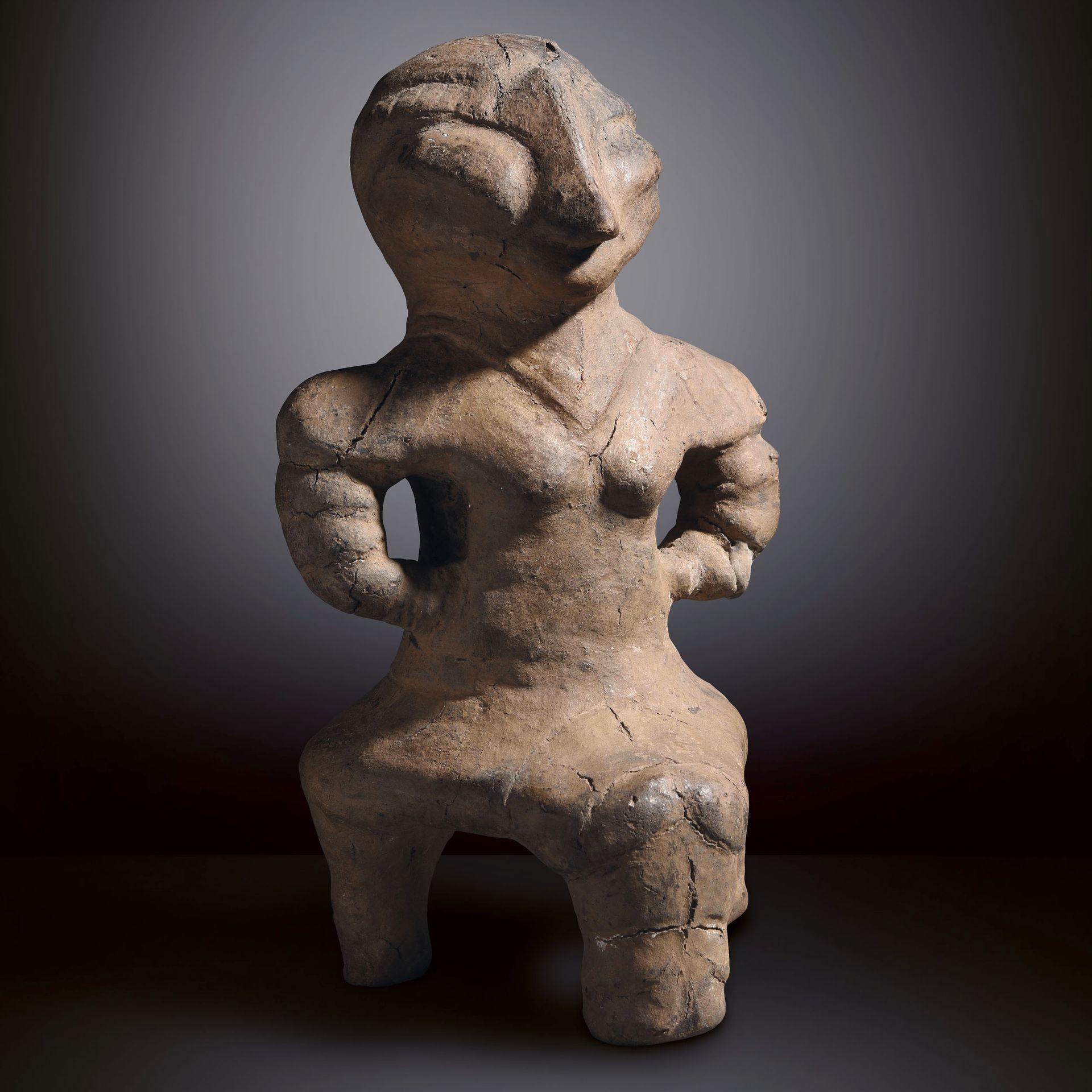Description
STEATOPYGE IDOL Neolithic, Vinca Culture, c. 5000-4500 B.C. Brown terracotta H. approx. 18 cm Provenance Former French private collection of Mr. F.A., 1980s French private collection Depicted seated, legs together, arms folded and brought under the chest. The prominent head is characterized by stylized features; large eyes, a long and thin nose, worked in relief just like the chest. The arms, legs and neck lines are marked by incisions in the clay. The formal posture could have a religious or spiritual significance; like a domestic deity. For a similar typology see British Museum, inv. 1939,0704.1. Reference literature S. Hansen, Bilder vorn Menschen der Steinzeit. Untersiuchungen zur anthropomorphen Plastik der Jungsteinzeit und Kupferzeit in Südosteuropa (Archäologie in Eurasien, vol.20), vol.1, 2007, p.211, plate 317 An eastern european Vinca culture terracotta idol. Represented seated, legs together, arms folded and brought under the chest. The prominent head is characterized by stylized features; big eyes, a long and fine nose worked in relief like the chest. The arms, legs as well as the lines of the neck are marked by incisions in the terracotta. The formal posture could have religious or spiritual significance; like a domesti deity. For a similar typology see British Museum, inv. 1939,0704.1. Literature: S. Hansen, Bilder vorn Menschen der Steinzeit. Untersiuchungen zur anthropomorphen Plastik der Jungsteinzeit und Kupferzeit in Südosteuropa (Archäologie in Eurasien, vol.20), vol.1, 2007, p.211, plate 317. Ca. 5000 - 4500 B.C.
3
STEATOPYGE IDOL Neolithic, Vinca Culture, c. 5000-4500 B.C. Brown terracotta H. approx. 18 cm Provenance Former French private collection of Mr. F.A., 1980s French private collection Depicted seated, legs together, arms folded and brought under the chest. The prominent head is characterized by stylized features; large eyes, a long and thin nose, worked in relief just like the chest. The arms, legs and neck lines are marked by incisions in the clay. The formal posture could have a religious or spiritual significance; like a domestic deity. For a similar typology see British Museum, inv. 1939,0704.1. Reference literature S. Hansen, Bilder vorn Menschen der Steinzeit. Untersiuchungen zur anthropomorphen Plastik der Jungsteinzeit und Kupferzeit in Südosteuropa (Archäologie in Eurasien, vol.20), vol.1, 2007, p.211, plate 317 An eastern european Vinca culture terracotta idol. Represented seated, legs together, arms folded and brought under the chest. The prominent head is characterized by stylized features; big eyes, a long and fine nose worked in relief like the chest. The arms, legs as well as the lines of the neck are marked by incisions in the terracotta. The formal posture could have religious or spiritual significance; like a domesti deity. For a similar typology see British Museum, inv. 1939,0704.1. Literature: S. Hansen, Bilder vorn Menschen der Steinzeit. Untersiuchungen zur anthropomorphen Plastik der Jungsteinzeit und Kupferzeit in Südosteuropa (Archäologie in Eurasien, vol.20), vol.1, 2007, p.211, plate 317. Ca. 5000 - 4500 B.C.
